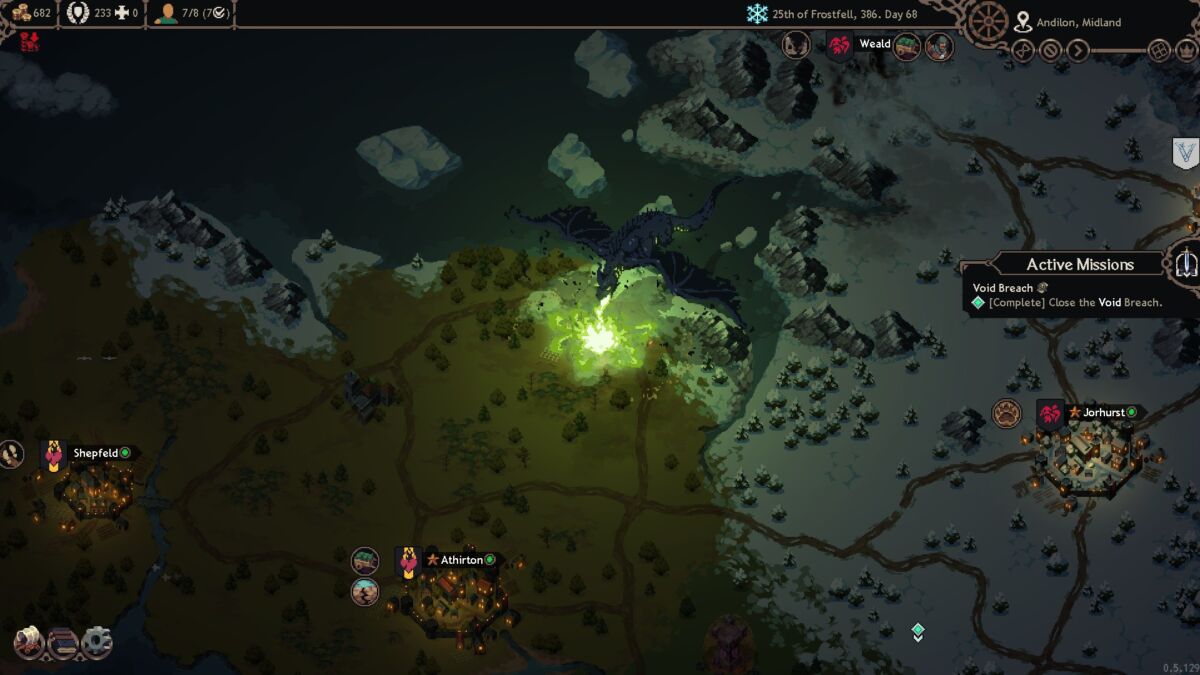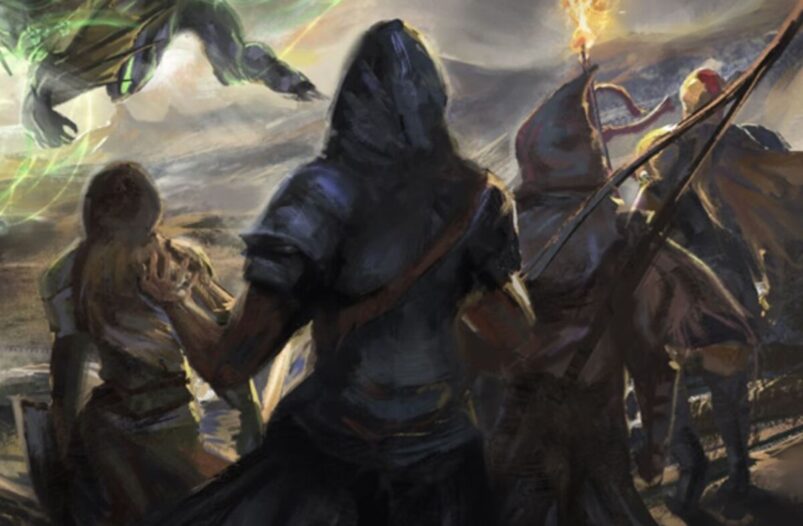Mercenary management strategy games have been gaining a lot of steam and interest lately. Perhaps it’s the thrill of exploration and the prospect of loot, the hunt for the next contract, or the excitement of finding a new opponent to challenge, but they’re really starting to come into their own. So what does Curious Panda Games’ The Iron Oath promise to bring to this corner of the strategy gaming market?
The Iron Oath is a turn-based mercenary management game set in an original fantasy world, with three major components making up the game: combat, dungeon crawling, and campaigning. Altogether, Iron Oath is clearly taking inspiration from games with similar structure and gameplay, such as Battle Brothers, Mechanicus, BattleTech, and even the first Darkest Dungeon as an attempt to present something fresh.
There are two major areas where Iron Oath shows promise, the first of which is its presentation. The game’s audio-visual component is quite stunning with its vibrant use of color, detailed pixel graphics, and thematically fitting music to emphasize the wonder and grandiosity of this new world. Aiding the great use of color and graphical detail is the solid art direction, specifically with character classes and enemy types in combat giving each figure a distinct silhouette to quickly read the battlefield at a glance.

The writing is also refreshingly simple, to the point, and infused with a sense of hope, despite the world facing constant cataclysms and raiding demons. Though the dialogue and the narrative aren’t exactly stellar, it’s still a highlight, especially in contrast to the overused gritty, grimdark tone that most games of this style go for.
However, the area that definitely shows the most promise is Iron Oath’s combat system. Firstly, it’s quite challenging on higher difficulty levels, making the AI both tougher and also more intelligent in its moves, such as taking flank positions, focus firing, and utilizing the terrain.
Secondly, players have six distinct classes to work with, each with their own battlefield role and arsenal of abilities, giving plenty of flexibility to compose your own subclasses, builds, and loadouts to best suit your playstyle. The Pyrolancer, in particular, deserves mention for its creative name and awesome flame-related abilities and mechanics.

Finally, Iron Oath introduces an interesting charges system for character abilities, whose uses are persistent in the longer dungeon-crawling sections. This adds a fresh layer of resource management to combat and incentivizes players to utilize their diverse abilities, rather than simply sticking to one or two cornerstone skills.
Unfortunately, while the combat shows impressive potential even in its current Early Access state, we don’t have the same kind of confidence for the rest of the game.
Iron Oath’s second component, dungeon-crawling, though functional and structurally sound, is lacking in content and can quickly become tedious. This comes down to a lack of exciting loot and dungeons seem to be lacking in varied events and encounters. Even in the earliest stages of the game, I noticed some events repeating several times across multiple dungeons, which made each venture feel samey and uninteresting. The dungeon-crawling even started to make combat encounters feel repetitive, due to the monotonous environments.

The area where we have the most concern is in The Iron Oath’s campaign system, where you’ll be marching from town to town, point of interest to point of interest, completing contracts, and following the game’s central narrative. Despite there being a whole world that players can observe that teases a kind of open world to delve into and explore, there’s not much in-game incentive to do so.
It all comes down to an apparent core design philosophy conflict where the developers aim to tell a quasi-linear and scripted narrative to take the player on a journey, but it’s at odds with the inherent freedom implied by the nature of mercenary management games. And while the writing is solid enough, alone it’s not quite strong enough to carry the frustrating linearity of the game.

In addition, there’s simply not much to do on the campaign map, aside from moving from location to location. The world of Caelum lacks dynamism in its current state and the scripted sudden events and engagements aren’t quite enough to liven up the world. To add insult to injury, Iron Oath’s UI is inefficient and fiddly and only adds to the feelings of tedium.
Just like the player’s company in the game’s narrative, the developers of The Iron Oath have a long road and a lot of work ahead of them, especially on the strategic elements. Luckily, the combat and solid presentation do give the game a decent baseline to work with, so really there’s only one way but up, as the game begins the long trek to release. However, The Iron Oath needs significant improvements and content updates before it’s an oath we can take.
A Steam key was provided by PR for the purposes of this preview.
READ NEXT: 10 Best Roguelike Strategy Games
Some of the coverage you find on Cultured Vultures contains affiliate links, which provide us with small commissions based on purchases made from visiting our site.

